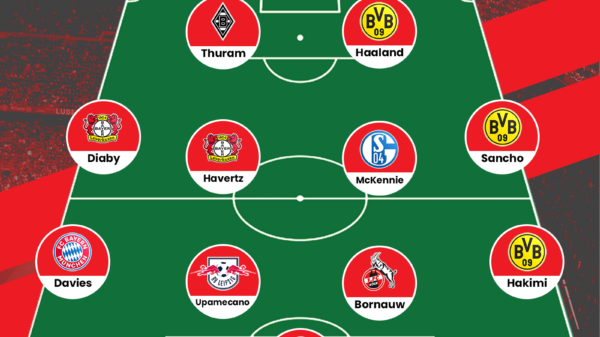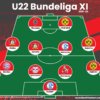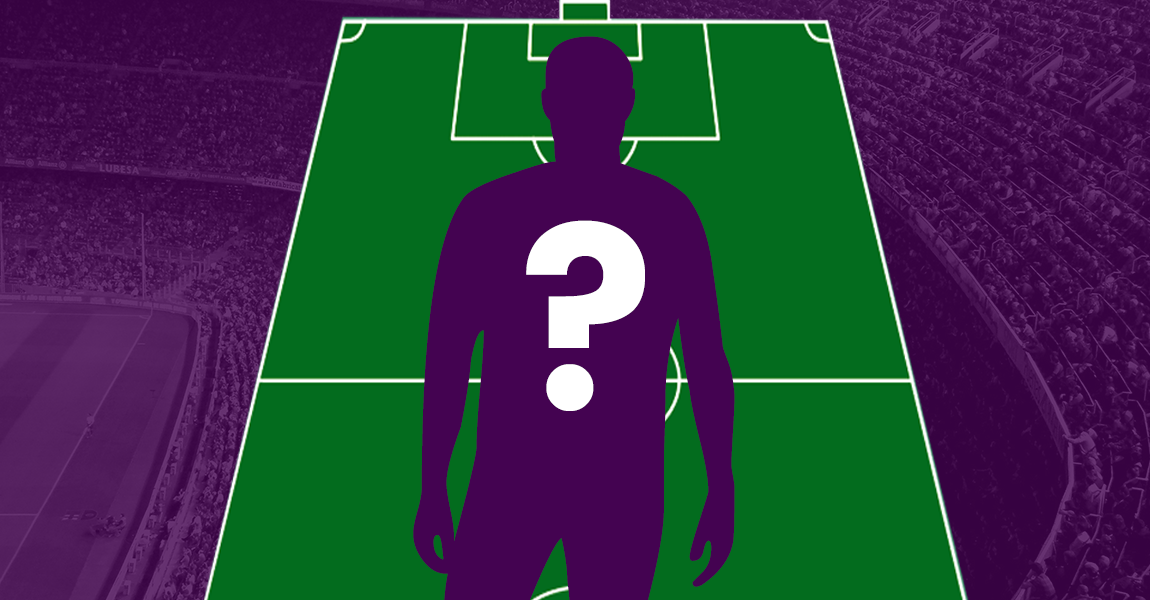Miles Olusina writes a detailed tactical analysis about the Champions League Round of 16 second leg that ended Dortmund 4-0 Benfica.
The second leg of this Champions League tie saw Thomas Tuchel’s Borussia Dortmund side host Benfica at the Westfalenstadion; with the away side protecting a slender lead after their 1-0 victory at the Stadium of Light a few weeks earlier. Both teams came into this game in good domestic form, with both winning four of their previous five games; Dortmund were arguably the favourites though, considering their solid home record and incredible goal-scoring form in the Champions League this season. They did not disappoint as they dispatched Benfica with relative ease, coming away with a 4-0 win after a very even first half.
Injuries to Mario Götze and Marco Reus forced a change in system for the men in yellow, with Tuchel opting for a 3-5-2 with both full backs positioned very aggressively and Ousmane Dembele playing in almost a hybrid no.9/10 role. It proved effective as Benfica’s wide men struggled to contain the very advanced full backs of Dortmund, which had negative ramifications on their transition game and was ultimately one of the deciding factors in the tie.
Line Ups
Dortmund (3-5-2): 38. Burki // 26. Piszczek, 5. Bartra, 25. Sokratis // 37. Durm, 33. Weigl, 27. Castro, 22. Pulisic, 29. Schmelzer // 17. Aubameyang, 7. Dembele
Benfica (4-2-3-1): 1. Ederson // 50. Semedo, 4. Luisao, 14. Lindelof, 19. Eliseu // 7. Samaris, 34. Almeida // 18. Salvio, 21. Pizzi, 22. Cervi // 11. Mitroglou
Substitutions: 81’ Kagawa (Dembele), 86’ Schurrle (Aubameyang), 88’ Ginter (Sokratis) // 64‘ Jonas (Salvio), 74’ Zivkovic (Samaris), 82’ Jimenez (Cervi)
Goals: 4’, 61’, 85’ Aubameyang, 59’ Pulisic
Benfica’s compact midfield hinders Dortmund circulation
Despite what the scoreline may suggest, Benfica were rather resolute defensively for most of the first half. The early goal may have all but thrown their gameplan out the window, however they did well as a unit to restrict Dortmund to circulating possession in wide areas and between the back three.
With Bartra, Sokratis and Piszczek forming a three man central defensive partnership, it was clear that Mitroglou alone would be powerless to stop the Dortmund centre backs from exploiting their 3v1 overload. Instead, manager Rui Vitoria opted for a passive approach when the centre backs had possession, instructing Mitroglou to halt progression through the Dortmund 6 Julian Weigl with cover shadows or sometimes outright man marking.
Benfica’s defensive shape can be seen above. They initially began with a much more flexible structure when the ball was in the Dortmund build up phase, as the midfield players needed access when tracking Dortmund midfielders who attempted to drop onto deeper lines to provide vertical passing options for the centre backs. It was rare to see them press as a collective, which could have potentially had negative effects on the structure of the block. However with effective cover shadowing, they were able to obstruct passing lanes from more advanced Dortmund players who looked to receive the ball between the lines as the LW Cervi is doing as Pulisic looks to receive the ball behind the Benfica midfield line.
Dortmund’s structure with a three man central defence also had a key role in their inability to effectively circulate the ball and create connections in the midfield area. The overload in the build-up phase had a knock on effect in the midfield as it meant they were underloaded in these areas. With the Benfica wide players moving into the half-spaces and Mitroglou dropping deeper to man mark Weigl, it was effectively a 6v3 in midfield.
Benfica’s situational man marking when Dortmund midfielders attempted to drop deep was countered by rotational movement from Castro and Weigl and also movements into deeper spaces by Pulisic and Dembele. This was not beneficial for their final third organization though, as when the ball reached these areas, they were not set up correctly due to players having to vacate their positions to compensate for the underloaded midfield.
Benfica unable to cope with advanced Dortmund full-backs
With Benfica all but in control of the central areas, Tuchel decided to use his full-backs with much more frequency in this game, with the hope of creating space in central areas and drawing Benfica’s wingers away from the half-space. 3 centre backs gave Dortmund the necessary balance to allow both full-backs to occupy very aggressive positions, sometimes on the same line as Dembele and Aubameyang. With only one out and out wide player on each flank it would seem obvious that Benfica’s full backs would be more than capable of containing the attacking threat of Durm and Schmelzer. However they opted for very rigid man-marking in the wide areas when the Dortmund wing backs approached the final third.
Both full backs hugged the touchline whenever Dortmund had possession in the final third, forcing the Benfica wide men to track their movements as leaving them with an excessive amount of time and space on the ball would allow them to play dangerous balls into the box for Aubameyang or combine with Ousmane Dembele.
Benfica’s aggressive man marking of Dortmund’s wide players had severe effects on their defensive structure, as they relinquished compactness in the midfield area, allowing the half-spaces to be left available for dropping movements from Ousmane Dembele, who took full advantage.
In the scenario above, Marcel Schmelzer has occupied a very advanced position on the left wing, with Eduardo Salvio following him. In doing so, he has moved onto the same line as the back 4, forming a 5 man back line. As a result, Benfica no longer have the central overload they had in the previous phase due to him no longer being positioned in the half-space.
Dembele drops off from his 9 position into the left half space to receive possession and drag full-back Nelson Semedo out of position. Had Salvio remained in a higher position, he would have been able to cover shadow Dembele when he dropped into the 10 space and also allowed his side to have numerical equality in the midfield area.
This also allowed Dortmund to circulate the ball through midfield with greater ease, as Benfica’s midfield compactness suffered. The home side were now able to find greater connections in midfield with their passing lanes no longer being obstructed by the cover shadows of the Benfica midfielders. Here, Weigl receives the ball in a large amount of space and looks to find a vertical passing option. In previous situations such as this during the game, the two 8s, Pulisic and Castro were unavailable as a result of Benfica’s well-structured midfield shape.
However, now in this phase, he is able to find Pulisic who has dropped into the half-space to provide Weigl with an outlet. This is made possible by the positioning of Erik Durm, who like his full-back partner Schmelzer, takes up a very advanced position in the wide area. This attracts wide man Cervi who drops into the back line and frees up the half-space for Pulisic to receive the ball. As a result, the Benfica 6 follows Pulisic which creates an opening in the 10 space that Aubameyang could possibly exploit by dropping off from his no.9 position.
Where does this leave them?
A good result for Dortmund, who turned the tie around excellently and dominated the game from start to finish. The performance was made all the more impressive considering they were missing key players. In what has been an average season by Dortmund’s standards, their progress in both the DFB Pokal and the Champions League is very commendable. Their league form has picked up considerably also, however with Bayern all but destined to win another title, they will be hoping for glory in the cup and a second place finish.
Read all our tactical analyses here
- Scout Report: Marcus Thuram | Gladbach’s attacking sensation - July 17, 2020
- Tactical Philosophy: Paulo Fonseca - May 28, 2020
- Maurizio Sarri at Chelsea: Tactical Approach & Key Players - September 5, 2018





























































